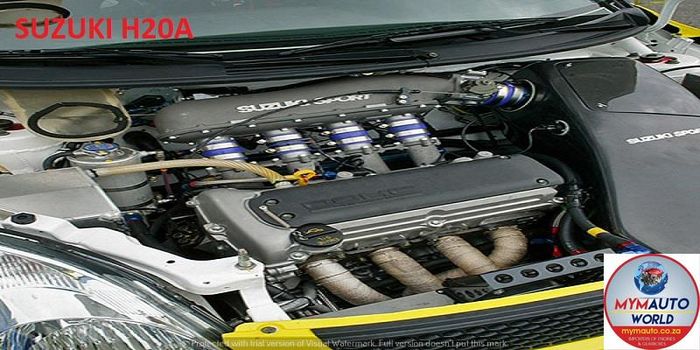Discovering the very best Offers on Opel Corsa Engine Parts
Discovering the very best Offers on Opel Corsa Engine Parts
Blog Article
Checking Out the Inner Operation of a Compact Automobile's Engine System
As drivers, we usually take for provided the detailed procedures that occur within the boundaries of our lorry's engine system. In this expedition of a small car's engine system, we will certainly unwind the inner functions of this mechanical symphony, shedding light on the secrets that drive us forward on our everyday trips.
Combustion Process Review
The burning process in a compact lorry's engine system is a critical system that effectively transforms gas into energy to power the lorry. This process occurs within the combustion chamber of the engine, where fuel and air mix, stir up, and produce regulated explosions. The burning process consists of 4 main stages: consumption, exhaust, power, and compression.
During the consumption stage, the piston moves downward, drawing in a mix of air and gas right into the burning chamber. The next stage, compression, entails the piston relocating up, pressing the air-fuel blend to raise its effectiveness. Consequently, in the power phase, the stimulate plug ignites the compressed blend, leading to a quick growth of gases that forces the piston pull back. This descending motion produces the power needed to drive the automobile. Finally, in the exhaust phase, the scorched gases are gotten rid of from the burning chamber through the exhaust shutoff, preparing the chamber for the next cycle. This cyclic combustion procedure is essential to the operation of a small automobile's engine system, guaranteeing effective energy conversion for propulsion.
Piston and Cyndrical Tube Communication

The piston's specific fit within the cyndrical tube is necessary for preserving ideal compression and stopping energy loss throughout burning. Limited clearances in between the piston and cylinder wall surfaces make certain efficient sealing, permitting the piston to move smoothly without allowing gases to leakage past. Correct lubrication is likewise vital to reduce rubbing and use between these elements, enhancing longevity and efficiency.
In addition, the style and products used in manufacturing the piston and cyndrical tube influence engine performance and toughness. Modern engines typically utilize lightweight yet sturdy materials like aluminum alloys for pistons and cylinder linings to lower inertia and enhance thermal efficiency. In general, the unified communication between the piston and cyndrical tube is fundamental to the engine's functionality and general efficiency.
Fuel Shot System Functionality
Fuel shot systems in portable lorry engines play a vital role in specifically delivering gas to the burning chamber for regulated and effective ignition. The gas injection system operates by infusing gas into the combustion chamber at the optimum moment throughout the engine's operation (opel corsa engine). This accurate timing guarantees that the gas mixes equally with the air for proper burning, causing boosted gas effectiveness and reduced emissions
There are mainly 2 sorts of gas shot systems used in compact vehicle engines: port fuel shot (PFI) and straight gas injection (DFI) PFI systems inject fuel into the intake port prior to the intake shutoff, while DFI systems infuse gas straight right into the burning chamber. Both systems have their benefits, with DFI providing far better fuel atomization and PFI supplying a more cost-efficient option.
Recognizing Engine Air Conditioning Devices
Reliable operation of a small vehicle's engine relies heavily on the performance of its cooling devices. The cooling system in a small vehicle commonly consists of numerous elements functioning with each other to control the engine temperature level. Recognizing these engine cooling mechanisms is go crucial for maintaining the performance get more and durability of a small lorry's engine system.

Exhaust System Components Explained
The optimal functioning of a small vehicle's engine cooling devices depends on a corresponding system recognized as the exhaust system, which makes up different necessary parts for ensuring reliable exhausts and engine efficiency. The exhaust system consists of parts such as the exhaust manifold, catalytic converter, muffler, and tailpipe. The exhaust manifold accumulates exhaust gases from the engine's courses and cylinders them to the catalytic converter. The catalytic converter after that converts hazardous pollutants in the exhaust right into much less unsafe exhausts prior to releasing them with the muffler and tailpipe.
One vital part of the exhaust system is the oxygen sensor, which keeps an eye on the oxygen levels in the exhaust gases to help control fuel usage and make certain optimal engine efficiency. opel corsa engine. In addition, the resonator may exist in some exhaust systems to reduce sound degrees. On the whole, the exhaust system plays a vital duty in preserving engine efficiency, decreasing hazardous exhausts, and ensuring a quieter driving experience for small car proprietors

Final Thought
In verdict, the small lorry's engine system is a complicated mix of elements that collaborate to help with the burning procedure, transform gas right into energy, and get rid of waste gases. Comprehending the internal workings of the engine system, including the piston and cylinder communication, fuel injection system, engine air conditioning devices, and exhaust system parts, is critical for visit their website preserving optimum performance and efficiency of the car.
The combustion procedure in a small car's engine system is an essential device that effectively converts gas into energy to power the lorry.Fuel shot systems in small lorry engines play a crucial function in exactly delivering gas to the burning chamber for reliable and controlled ignition.There are largely two types of fuel injection systems made use of in small car engines: port gas shot (PFI) and direct fuel injection (DFI) Comprehending these engine air conditioning systems is important for maintaining the efficiency and longevity of a small car's engine system.
The optimal performance of a portable vehicle's engine air conditioning devices depends on a corresponding system recognized as the exhaust system, which comprises numerous important elements for guaranteeing efficient exhausts and engine efficiency.
Report this page